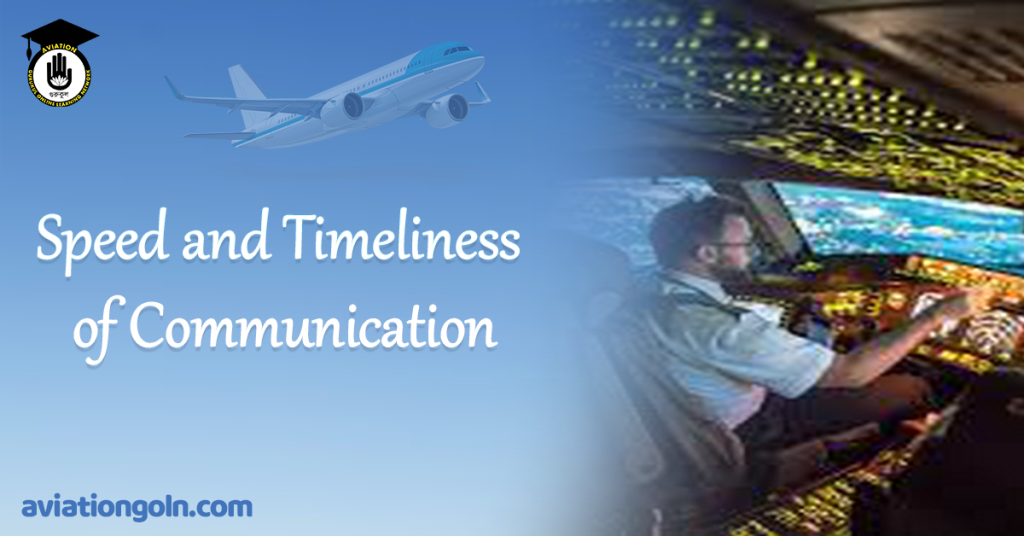Speed and Timeliness of Communication
Speed and Timeliness of Communication
Description
The speed and timeliness of transmissions make important contributions to the communications process:
- If the transmission is too fast, the recipient may be unable to copy it correctly;
- If a transmission is received at a time of high workload, it may be incorrectly copied or misunderstood.
Effects
Unless a message is copied correctly, its content may be misunderstood or not correctly acted upon.
A message which is received at a time of high pilot workload may disrupt a sequence of actions being followed such as a checklist and one or more items may then be missed when it is resumed.
The necessity to repeat an incompletely copied or understood message can take time better used on other matters.
Defenses
Transmissions must be conducted concisely in a normal conversational tone; full use must be made of standard phraseologies wherever these are prescribed in relevant ICAO documents or procedures.
Speech transmitting technique should be such that the highest possible intelligibility is incorporated in each transmission. Fulfillment of this aim requires that aircrew and ground personnel should:
a) enunciate each word clearly and distinctly;
b) maintain an even rate of speech not exceeding 100 words per minute. When a message is transmitted to an aircraft and its contents may need to be written down, the speaking rate should be slightly slower to allow for that action. A slight pause preceding and following numerals makes them easier to understand;
c) maintain the speaking volume at a constant level;
d) be familiar with microphone operating techniques particularly about the maintenance of a constant distance from the microphone if a modulator with a constant level is not used;
e) suspend speech temporarily if it becomes necessary to turn the head away from the microphone.
Speech transmission techniques should be adapted to the prevailing communications conditions. (ICAO Annex 10, Volume II, Chapter 5 Para 5.2.1.)
Deviation from an ATC clearance may be required for operational reasons (e.g. a heading deviation or altitude deviation for weather avoidance, or an inability to meet a restriction). Both the flight crew and the controller need time to accommodate this deviation; therefore flight crew should advise ATC of their request as far ahead as possible.
Pilot workload varies markedly according to conditions and phase of flight. Periods of increased workload include:
- Engine start, taxi, take-off and initial climb, standard instrument departure (SID);
- Approach and landing;
- Abnormal occurrences such as equipment malfunction or extreme weather; and,
- Emergency or abnormal situations.
Contributory Factors
- Frequency Congestion;
- Language;
- Read-back/hear-back;
- Radio interference;
- The expectation of clearance.
Solutions
- Control the speed of all transmissions to reduce the chances of pilot or controller error.
- ATCOs may not be able to avoid passing or revising clearances during periods of high workload; however, by appreciating when these are most likely, passing on clearances as early as possible, and by carefully monitoring read-back, they can reduce the likelihood of flight crew errors.
- Passing the initiative to the flight crew (“Copy (clearance/weather info/etc.) when ready”) could be considered if the ATCO workload is not excessive and the controller is unsure of the proper timing but suspects a high crew workload.
- Avoid multiple frequency changes during high workload periods the following take-off and the departure.
- More strategically, it may be possible to take into account flight deck workload issues when designing or revising ATM procedures.
Further Reading
AGC Safety Letters:
- AGC Safety Letter December 2004;
- AGC Safety Letter August 2005;
- AGC Safety Letter April 2006;
EUROCONTROL Action Plan for Air-Ground Communications Safety:
- AGC Briefing Note 5 – Radio Discipline;
EUROCONTROL Level Bust Toolkit:
- Level Bust Briefing Note Gen 2 – Pilot-Controller Communications;
- Level Bust Briefing Note ATM1 – Understanding the Causes of Level Busts.
Read more:

